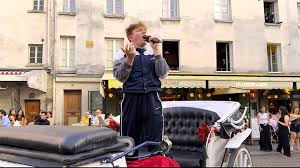The Rise of Bohemian Rhapsody Flashmobs: A Global Trend

Introduction
The phenomenon of flashmobs has taken the social media world by storm, with ‘Bohemian Rhapsody’ by Queen becoming a particularly popular choice for spontaneous group performances. This iconic song, released in 1975, combines a blend of opera, rock, and ballad tones, capturing the imaginations of performers and audiences alike. The resurgence of this trend is significant in fostering community spirit and promoting creative expression in public spaces.
Recent Events and Showcases
In recent months, numerous flashmobs dedicated to ‘Bohemian Rhapsody’ have been seen across various locations including shopping malls, public parks, and even transport hubs. Notably, a large-scale flashmob took place at London’s Oxford Circus, where over 100 participants, dressed in flamboyant costumes reminiscent of the era, surprised bystanders with a choreographed rendition of the classic song. Videos of the event quickly went viral, amassing millions of views on social media platforms.
Another remarkable instance occurred during a university event in Manchester, showcasing students’ creativity and teamwork. Participants practised secretly for weeks before surprising their fellow students during an intermission, highlighting the unifying effect of music and shared interests among diverse groups.
Why Bohemian Rhapsody?
The choice of ‘Bohemian Rhapsody’ for these flashmobs is rooted in the song’s timeless appeal and its narrative style, which allows for dramatic expression and varied interpretations. The song’s unpredictable shifts in tempo and mood make it a perfect candidate for flashmob choreography, where participants can showcase their individuality while being part of a collective performance.
Conclusion
The rise of ‘Bohemian Rhapsody’ flashmobs reflects a growing desire for creativity and connection in our increasingly digital world. As these performances continue to gain traction, they serve not only as entertainment but also as a reminder of the power of music to bring people together. Future forecasts suggest that this trend is likely to expand further, with more communities embracing the spontaneity and joy of flashmobs, thereby enriching the public experience through collective artistry and celebration.
